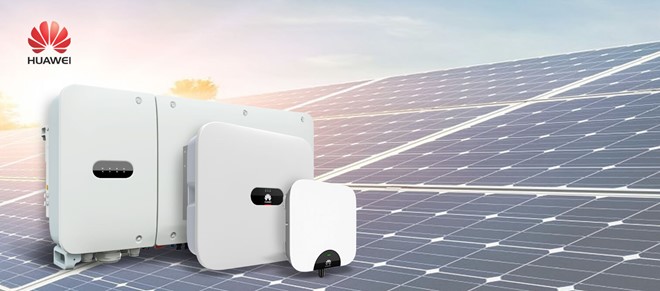
Huawei Technologies Co., Ltd. is a Chinese multinational technology company headquartered in Shenzhen, Guangdong. The company was founded in 1987 and it is most well-known for designing, developing, and selling telecommunications equipment and consumer electronics. In 2012, they overtook Ericsson as the largest telecommunications manufacturer in the world and over Apple in 2018 as the second-largest manufacturer of smartphones by Samsung.
Huawei were a later entrant to the Solar Inverter market, but have rapidly gained the top market share position.
The Huawei commercial solar inverter range has been available since 2011 with their residential inverters reaching the Australian market in January 2018. Huawei are the largest solar inverter manufacturer in the World shipping more than twice as much as their nearest competitor.
Anticipating the need for battery storage, Huawei residential inverters are all plug and play ready to connect a battery.
The Huawei Luna battery starts with 5kWh of battery storage and additional 5kW battery modules can be added to to create 15kWh of storage. A second 15kWh battery can be added to give a maximum of 30kWh of storage.
Huawei manufacture their own 450W DC optimisers that can be connected to all, any or none of the solar panels.
When deployed the reporting software shows the individual output of each optimised panel and delivers instant shut-down and Arc fault detection in the event that a fault is present.
The most common use of the optimisers is where they are fitted on panels that get some shade. When the panel is shaded and its flow of current reduces, the optimiser automatically drops its voltage to raise the panel current matching the current of the rest of the string, and therefore limiting output losses to only the shaded panel.
Huawei have a single and three phase consumption meter, often called a ‘smart meter’ which is optional but provides some very useful additional reporting information. Without the energy meter, the Huawei Fusion solar reporting data (available free for both smartphone and web browser) will show the solar production. However, with the smart meter, the reporting shows imports of power from the grid, exports out to the grid as well as self-consumption of the solar. This data is provided 24 hours a day, not just when the solar is operating.
When a battery is required, the smart meter is required to inform the inverter of household loads and therefore whether the inverter needs to release or store battery power. The reporting data then includes further information about the battery status, and charge and discharge information.
